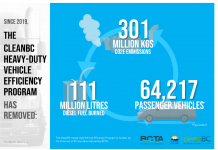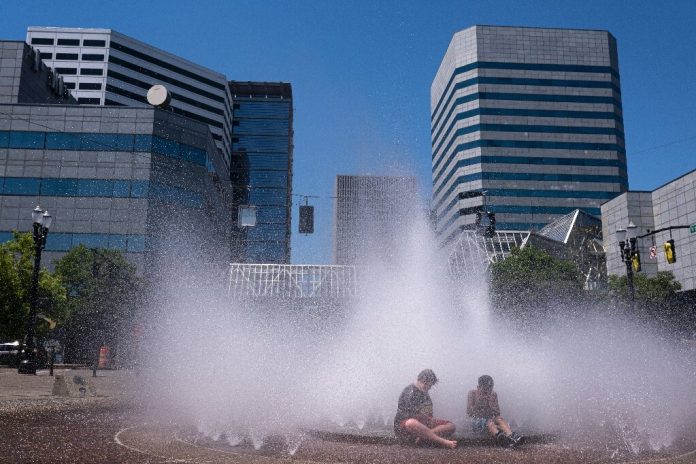Instant Heat Wave: Adjusting to Canada’s Crazy Climate
Here it is, the start of June and suddenly, the thermometer is soaring through the roof. Two weeks ago in Ottawa, there were frost warnings. Now much of Southern Ontario is under several days of heat warnings. Temperatures from Windsor to Ottawa and toward Montreal are expected to reach 35C with the humidex. When the air temperature rises, the air quality often deteriorates.
“Extreme heat affects everyone,” Environment Canada said in an alert Thursday, “Extreme heat affects everyone.” The agency says risks are greater for young children, pregnant women, older adults, people with chronic illnesses and those working or exercising outdoors.
We all need to pay attention, though. Even though temperatures can change quickly, it takes humans some time to adjust to the hot weather.
Ottawa Public Heath says, “Early heat waves can be especially dangerous because our bodies have yet to acclimate. It takes our bodies up to two weeks to adjust to hot weather; take it easy until your body has adjusted by drinking more water & taking extra precautions.”
There are four major problems to watch out for in the hot, sunny weather: dehydration,
heat exhaustion, heat stroke, and sunburn.
Here are the signs to look out for in yourself and others:
DEHYDRATION is caused by the excessive loss of water and salts from the body due to illness or prolonged heat exposure. Severe dehydration can easily become a life- threatening condition for infants and the elderly. These are some warning signs:
- Thirst
- Dry skin
- Fatigue
- Lightheadedness
- Confusion
- Dry mouth
- Increased heart rate
- Increased breathing rate
- Less frequent urination
It can be prevented by drinking fluids, such as water, juice or sports drinks, and by
avoiding strenuous activity outdoors during intense sunlight from 10 a.m. to 3 p.m.
If you or someone you know is experiencing dehydration, move to a cool, dry place, lie
down and rest, and drink plenty of fluids.
HEAT EXHAUSTION signs include:
- Headache
- Blurred vision
- Nausea or upset stomach
- Vomiting
- Sluggishness or fatigue
- Thirst
- Profuse sweating
- Moderate increase in body temperature
Heat exhaustion is a non-life-threatening condition caused by the excessive loss of water and salts from the body due to prolonged exposure to extreme heat. Continued exposure may lead to heat stroke, which is life-threatening.
Children and the elderly are most susceptible to heat exhaustion.
It can be prevented by taking frequent breaks from the heat. If you’re outside, wear light-coloured clothes and a hat and avoid strenuous activity between 10 a.m. and 3 p.m. when the sun is the hottest. Drink plenty of fluids throughout the day, but avoid caffeine and alcohol.
If you or someone you know is experiencing signs of heat exhaustion, move to a cool, dry place, lie down, apply cool water to the skin, reapply often, and have a fan. Keep hydrated and apply ice to areas such as the head, neck, armpits and groin.
HEAT STROKE: Signs include:
- Headache
- Dizziness
- Disorientation, agitation or confusion
- Sluggishness or fatigue
- Seizures
- Hot dry skin
- Increased body (inner) temperature
- Loss of consciousness
- Rapid heartbeat
- Hallucinations
Heat stroke is a life-threatening condition. It occurs when the body cannot cool itself, usually by sweating, and its core temperature becomes too high.
It can be prevented by taking frequent breaks from the heat. If you’re outside, wear light-coloured clothes and a hat and avoid strenuous activity between 10 a.m. and 3 p.m.
when the sun is the hottest. Drink plenty of fluids throughout the day, but avoid caffeine and alcohol.
If you or someone you know is experiencing signs of heat stroke, call 9-1-1 immediately,
move to a cool, dry place, and lie down. Keep hydrated and apply ice to areas such as
the head, neck, armpits and groin. Apply cool water to the skin and reapply often and
have a fan.
Sunburn Signs include:
- Skin is red, tender and warm to touch
- Blisters
- Severe reactions such as fever, chills, nausea or rash
- Fever or chills
- Peeling skin several days later
Sunburn occurs when skin cells not protected from direct exposure to the sun are burned. Damage can range from a mild burning sensation to severe blistering of the affected area, depending on how long unprotected skin is exposed.
Research shows that repeated overexposure to the sun may lead to various forms of cancer, including melanoma.
Sunburns can be prevented by wearing sunscreen that protects against UVA and UVB rays with a sun protection factor (SPF) of 30 or more (do not use sunscreen on babies under 6 months of age), by wearing a wide-brimmed hat and tightly-woven clothing such as long sleeved shirts and pants, and by avoiding sun exposure between 11 a.m. and 4 p.m. when the UV index is 3 or higher.
Sunburns can take several hours to a day before the full effects are apparent.
Pain medications may help to reduce pain and swelling. If you get a sunburn, treat it with cool compresses or a cool bath to help minimize pain and swelling. You can apply aloe gel if needed; avoid using creams or lotions that can hold heat inside the skin or contain numbing medication.
Severe sunburns require medical attention.
Heat waves are becoming more prevalent as our climate warms. Heat waves are more dangerous when combined with high humidity. The combination of temperature and humidity is measured by the heat index.
Our Canadian environment is one of extremes and can be very demanding. We need to take precautions and be aware of the dangers for ourselves and our loved ones, who sometimes depend on us to keep a watchful eye on their behalf.
Oh, Canada, our home and native land
Cold winters and hot summers,
We’re at mother nature’s command.






















